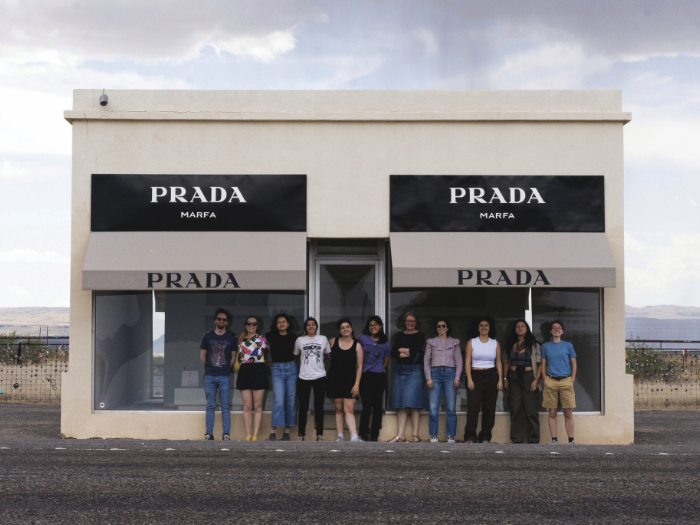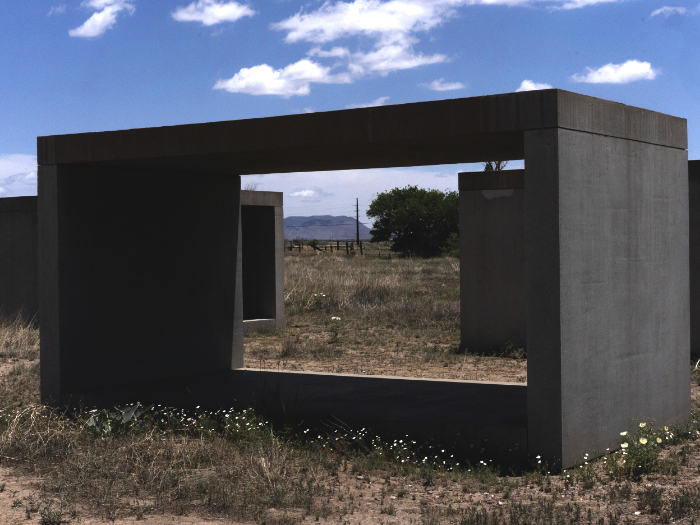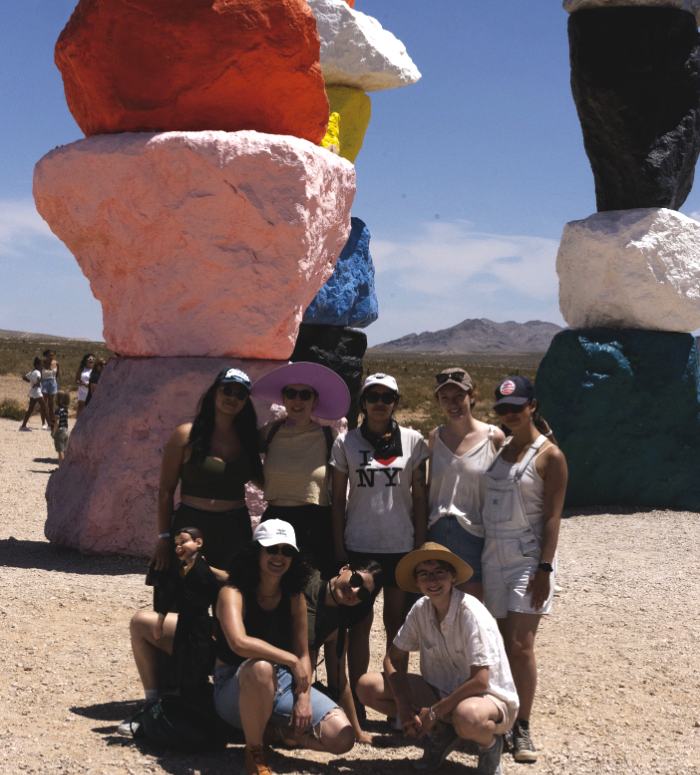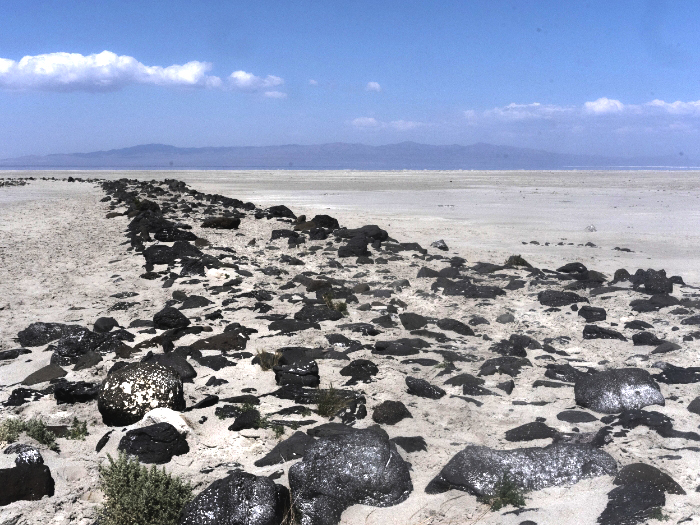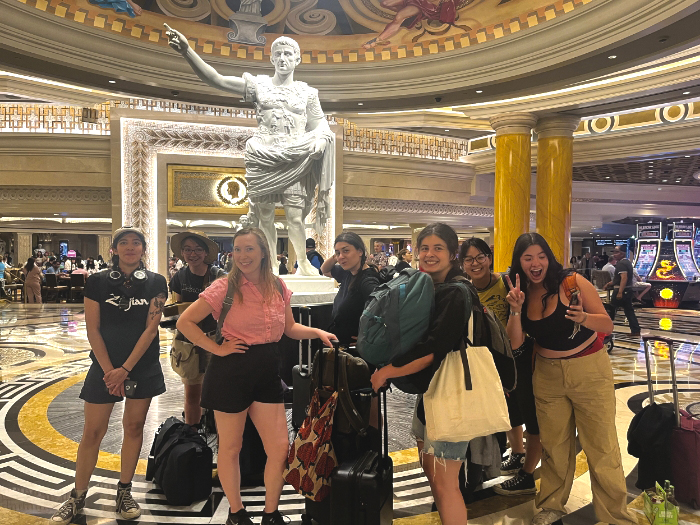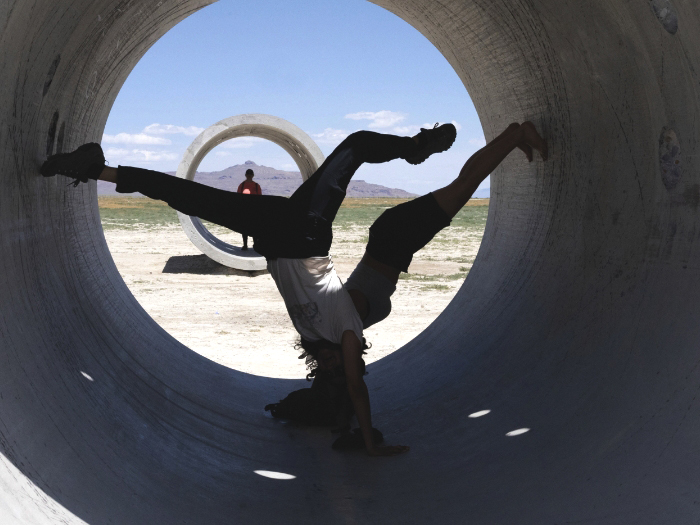
Mehring and her students were some of the first visitors to Michael Heizer’s City, a monumental artwork—a mile and a half long and nearly half a mile wide—which first opened to the public in 2022, more than 50 years after Heizer first started working on it. (45°, 90°, 180°, City. © Michael Heizer. Courtesy Triple Aught Foundation. Photo: Joe Rome)
A summer road trip in search of land art.
The first thing to know about land art is it’s extremely difficult to see.
It won’t come to a museum near you. It can’t.
So to see it, first you have to get there. “There,” for American land art, usually means a remote area of the desert West.
Nevada, New Mexico, Utah—those are the kinds of states where you find land art.
You will fly into the nearest large(ish) city with an airport. Maybe El Paso, Texas; or Las Vegas, Nevada; or Salt Lake City, Utah.
Then you drive for hours, typically into areas with no cell phone service.
To find the art—which is large for art, but not in comparison to the miles of empty land that surround it—you will have to follow written (and sometimes conflicting) directions of varying quality.
To get to Nancy Holt’s Sun Tunnels (1973–76) in the Great Basin Desert of Utah, for example: “About 8 miles past the state line is a sign for Lucin, an empty town with no remaining buildings. … Bear right at the unmarked fork in the road …”
To visit Michael Heizer’s Double Negative (1969), on Mormon Mesa in Nevada, “requires travel on unpaved, rocky roads, so a vehicle with high clearance and good tires is highly recommended. … You should be prepared for exposure to desert temperatures, which in the summer can run up to 120 degrees.”
Sometimes you can’t just show up, because the art is in an undisclosed location. You have to apply to visit through a lottery system.
For example, six people per day are allowed to visit The Lightning Field (1977) by Walter De Maria, located somewhere in Catron County, New Mexico. The piece consists of 400 stainless steel poles with pointed tips, arranged in a grid that measures one mile by one kilometer. It’s open from May through October. Each year, when the lottery opens in February, thousands of people apply to visit.
If your application is accepted, you will be dropped off at The Lightning Field’s site. According to the stipulations of the artist, you must remain there for 24 hours. There is a cabin with food, but no way out. Don’t try to walk. You’re in the middle of nowhere, and De Maria selected the area because of its frequent lightning storms.
Similarly, six people per day are allowed to visit City by Michael Heizer, located in Nevada’s Garden Valley. Heizer began working on City in 1970 and labored on it for more than half a century. The monumental sculpture looks like a cross between Cahokia Mounds—the ruins of the pre-Columbian center of the Mississippian culture in southern Illinois—and a simulated video game world. It takes about half an hour to walk from end to end. City, which cost $40 million to build, opened to the public for the first time in the fall of 2022.
If you are lucky enough to be allowed to visit City, you will be driven to its desert location in the middle of the day and you must remain there, with only water, for a few hours.
Taking photographs of either The Lightning Field or City is forbidden. For both De Maria and Heizer, it was the experience of being there that was important.
Now imagine, incredibly, that you want to be one of the first people in the world to see City. And since you’re already out West, you want to take in The Lightning Field too.
In that case, it helps to be an art history student at UChicago and to know Christine Mehring.
Last summer Mehring, the Mary L. Block Professor of Art History, took 11 students—a mix of College and graduate students from last spring’s Earthworks Revisited course—on a traveling seminar. (The full costs of the art history department’s annual traveling seminars are covered by a 2013 endowment from Amy Gold, AM’90, and her husband, Brett Gorvy.) The small size of the seminar was determined by the limitations on visiting The Lightning Field and City: two groups of six.
Over two weeks, Mehring and her students road-tripped through five states, seeing such pieces as Prada Marfa (2005) by Elmgreen & Dragset outside Marfa, Texas, and Spiral Jetty (1970) by Robert Smithson at the Great Salt Lake in Utah. The group also took in the faux art collection at Caesar’s Palace in Las Vegas, where they stayed for three days.
Here is some of what they saw.
